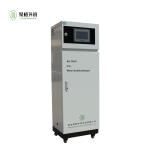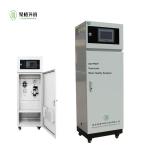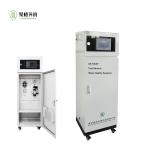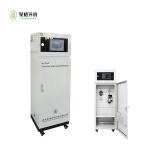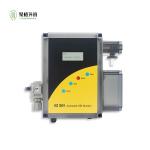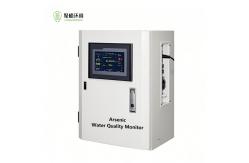Arsenic Online Water Quality Analyzer
>>Overview Low arsenic exposure can lead to growth retardation, reduced
fertility, increased spontaneous abortions, and higher mortality
rates. It also reduces skeletal mineralization and has been
observed to cause atrophy of myocardial and skeletal muscle fibers
in sheep and minipigs, accompanied by mitochondrial membrane
alterations and potential rupture. While the biochemical role of
arsenic in the body remains unconfirmed, studies suggest it may
interact with enzymatic processes: arsenate substitutes phosphate
as an enzyme activator, while arsenite binds to thiol groups as an
enzyme inhibitor, significantly altering enzymatic activity.
Reduced blood arsenic levels have been observed in hemodialysis
patients, potentially linked to central nervous system disorders
and vascular diseases. This analyzer operates autonomously under long-term unattended continuous monitoring based on field configurations. It is widely applicable to
industrial wastewater discharge, process wastewater, industrial and
municipal sewage treatment plants, and similar environments.
Depending on on-site complexity, optional preprocessing systems can
be integrated to ensure reliable testing processes, accurate results, and compliance with diverse operational demands.
>>Principle The analyzer employs a spectrophotometric colorimetric method. Upon mixing the water sample with conditioning agents, all
arsenic species are converted to arsenic ions. In an alkaline
environment with a sensitizer, these ions react with an indicator
to form a colored complex. The analyzer quantifies total arsenic by
detecting color intensity changes at specific wavelengths and
outputting corresponding values. The color intensity is directly
proportional to the total arsenic concentration.
>>Technical Parameter | Test Method | Arsenomolybdenum Blue Spectrophotometric Method | | Measuring Range | 0~10mg/L (segmented measurement, expandable) | | Detection Limit | ≤0.05mg/L | | Resolution | 0.001mg/L | | Accuracy | ±5% | | Repeatability | ≤±5% | Drift (24h) | Zero drift: ±5% Span drift: ±10% | | Measurement Time | <35min (digestion time adjustable) | | Measurement Modes | Adjustable time interval, fixed time point, or triggered
measurement | Calibration Modes | Automatic calibration (1~99 days adjustable) Manual calibration based on actual water samples | Maintenance Cycle | 1 month per session; ~30min per maintenance
| | Human-Machine Interface | Touchscreen display and command input | Self-Diagnosis & Protection | Self-diagnoses operational status; retains data during
anomalies/power outages Automatically clears residual reactants and resumes operation after
reset/power recovery | | Data Storage | 5-year data capacity | | Input Interface | Digital input | Output Interfaces | 1× RS232, 1× RS485 2× 4~20mA analog outputs | Operating Environment | Indoor use; recommended temperature: 5~28℃, humidity ≤90%
(non-condensing) | Power Supply | Voltage: AC 220±10% V Frequency: 50±0.5 Hz Power: ≤150W (excluding sampling pump) | Dimensions | 520H × 370W × 265D (mm) |
|
